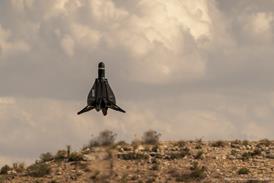Preliminary flight-recorder data indicates engine and configuration issues were present on the Embraer EMB-120 which apparently stalled on take-off from Lagos on 3 October.
Pilots of the turboprop, operated by Associated Aviation, had “discussed some concerns about the aircraft” before departure but the Nigerian Accident Investigation Bureau is not yet elaborating on their nature.
About 4s after applying throttle for the take-off roll the pilots received an audible configuration warning that the flaps were not in the correct setting. The position of the flaps has not been confirmed.
“There is some evidence that the crew may have chosen not to use flaps for the take-off,” says the inquiry. “The warning did not appear to come as any surprise to the crew and they continued normally with the take-off.”
After calling “power is set”, the first officer – who was the monitoring pilot – noticed the aircraft was moving “slowly”, it states. About 7s after the call the continuing configuration warning also started including an “auto-feather” alert.
The auto-feather system feathers the propeller to reduce drag if the engine is not producing enough thrust.
Analysis of the flight-data recorder suggests the right-hand Pratt & Whitney Canada PW118 engine appeared to be producing “considerably less thrust” than the left, says the inquiry. The right-hand propeller was later found in the feathered position, and the engine’s fire handle had been activated.
Initial signs that the crew were aware of a problem emerged after a standard 80kt call by the first officer, who inquired 12s later whether the take-off should be aborted. The captain indicated that the take-off should continue.
There was no V1 or rotate call. But as the aircraft lifted off, the first officer remarked “gently” which, the inquiry believes, showed “concern that the aircraft [was] not performing normally”. The first officer also indicated that the aircraft was not climbing, and cautioned the captain against stalling.
After departing runway 18L the aircraft drifted slowly to the right and, less than 10s after rotation, the stall warning sounded. Air traffic control inquiries to the aircraft went unanswered and, 31s after the onset of the stall warning, the aircraft struck the ground nose-down in a near-90° right bank.
Flight data shows that characteristics of the aircraft’s performance were “consistent” with an aerodynamic stall, says the inquiry.
Airspeed information, while apparently available to the pilots, was not registering properly on the recorder. “A few parameters were not working properly,” the inquiry says. “However, we do not think, in this particular case, that it will hamper the overall investigation.”
Source: FlightGlobal.com























